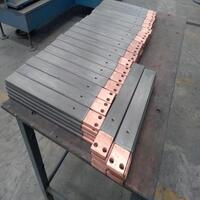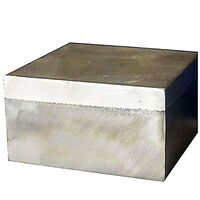1. Introduction
In the past 48 hours, a surge in sustainable building practices has spotlighted metal cladding as a top choice for eco-conscious architects and developers. With cities like Copenhagen and Toronto mandating low-carbon materials in new constructions, metal clad systems—especially those using recycled aluminum and corten steel—are gaining rapid adoption. This trend underscores the growing relevance of understanding what ‘metal clad’ truly means and how it’s reshaping modern design and engineering.

So, what is metal clad? At its core, ‘metal clad’ (or ‘metalclad’) refers to any structure, component, or surface that’s covered or layered with metal for protection, aesthetics, or performance enhancement. Whether it’s a sleek metal clad house, a durable metal clad roof, or even specialized metal clad electrical wire, this technique merges functionality with modern design.
2. Understanding Metal Clad: Meaning and Basics
2.1. Metal Clad Meaning and Clad Metal Meaning
The term ‘metal clad meaning’ often confuses newcomers, but it’s straightforward: it describes a composite material where a base metal is bonded—mechanically or metallurgically—to another metal layer. This is also known as ‘clad metals.’ For example, aluminum clad steel combines the strength of steel with the corrosion resistance of aluminum. Similarly, stainless clad aluminum or aluminum clad stainless steel offers tailored properties for specific industrial needs.
2.2. Metal Clad Type Variations
There are several metal clad types, depending on the application:
- Architectural cladding (e.g., metal clad wall, metal facade, standing seam siding)
- Industrial composites (e.g., titanium clad, copper nickel clad, 2024 T3 clad)
- Electrical components (e.g., metal clad wire, cu clad wire, aluminum clad wire)
- Insulation systems (e.g., aluminum clad pipe insulation, metal clad insulation)

Each type serves distinct purposes, from weather resistance to electrical safety.
3. Architectural Applications of Metal Clad
3.1. Metal Clad Walls and Facades
Modern buildings increasingly feature metal clad walls for their durability and visual appeal. Popular choices include corten steel facade panels, known for their rust-like protective layer, and zinc facade systems that develop a soft patina over time. Corrugated steel facade and vertical standing seam metal siding are also trending for their clean lines and low maintenance.
Corten steel siding cost remains a consideration—typically higher upfront than vinyl but lower long-term due to minimal upkeep. Similarly, zinc metal siding and copper siding offer premium aesthetics with excellent longevity.
3.2. Metal Clad Roofs and Roofing Systems
A metal clad roof isn’t just functional—it’s stylish. Options like zinc clad roof, colorbond standing seam, and PAC Clad standing seam roof systems provide watertight performance and energy efficiency. PAC Clad HWP and PAC Clad coping are specialized accessories that enhance edge protection and design continuity.

For sheds or small structures, a metal clad shed with exterior corrugated metal siding offers affordability and resilience against the elements. Meanwhile, a zinc clad dormer adds architectural character without sacrificing performance.
3.3. Residential Use: The Metal Clad House
The steel clad house movement is growing, especially among minimalist and off-grid builders. A metal clad house often uses steel plate or aluminum clad sheet for exterior cladding, paired with insulation for thermal efficiency. Materials like aluminum diamond tread plate or stainless steel checker plate may even be used for accent features or base plates.
4. Industrial and Technical Uses of Clad Metals
4.1. Clad Metal Composites in Engineering
Beyond architecture, clad metals are vital in aerospace, chemical processing, and marine industries. Examples include 7075 T6 clad aluminum plates for aircraft, inconel 625 weld overlay for high-temp corrosion resistance, and chrome carbide overlay plates for wear resistance.
Alloy clad systems—like nickel brass clad copper or cupro nickel clad—are engineered for specific conductivity, strength, or anti-corrosion needs. These are distinct from simple electroplating methods like chromium electroplating or electroless nickel coating.
4.2. Metal Clad in Electrical and Piping Systems
Metal clad electrical wire (often called MC cable) is widely used in commercial buildings for its fire resistance and mechanical protection. Aluminum clad steel wire and stainless clad aluminum variants serve specialized roles in harsh environments.
Similarly, aluminum clad pipe insulation wraps ducts and pipes to reflect heat and prevent condensation—common in HVAC and industrial plants.
5. Common Materials and Plate Types in Metal Cladding
The foundation of many metal clad systems lies in metal plates and sheets. Popular options include:
- Mild steel plate and corten steel plate for structural backing
- Stainless steel plate (316, 304L, 316L grades) for corrosion resistance
- Aluminum 5052 sheet and 6061 T6 aluminum plate for lightweight strength
- Diamond plate steel and aluminum tread plate for slip-resistant surfaces
- Perforated plate and metal plate with holes for decorative or acoustic uses
Prices vary widely—steel plate price depends on thickness (e.g., 1/8 inch steel plate vs. 3/16 steel plate) and alloy type. Buyers often search for ‘steel plate for sale near me’ or ‘aluminum sheet for sale’ to source materials locally.
6. Conclusion
From the sleek lines of a corten steel siding home to the rugged reliability of metal clad electrical wire, ‘metal clad’ is far more than a buzzword—it’s a versatile, high-performance solution across industries. Whether you’re designing a metal clad building, selecting clad metals for engineering, or simply curious about the metal clad meaning, understanding these systems empowers smarter, more sustainable choices. As green building codes evolve, expect metal cladding to remain at the forefront of innovation.
Our Website founded on October 17, 2012, is a high-tech enterprise committed to the research and development, production, processing, sales and technical services of ceramic relative materials such as What. Our products includes but not limited to Boron Carbide Ceramic Products, Boron Nitride Ceramic Products, Silicon Carbide Ceramic Products, Silicon Nitride Ceramic Products, Zirconium Dioxide Ceramic Products, etc. If you are interested, please feel free to contact us.
